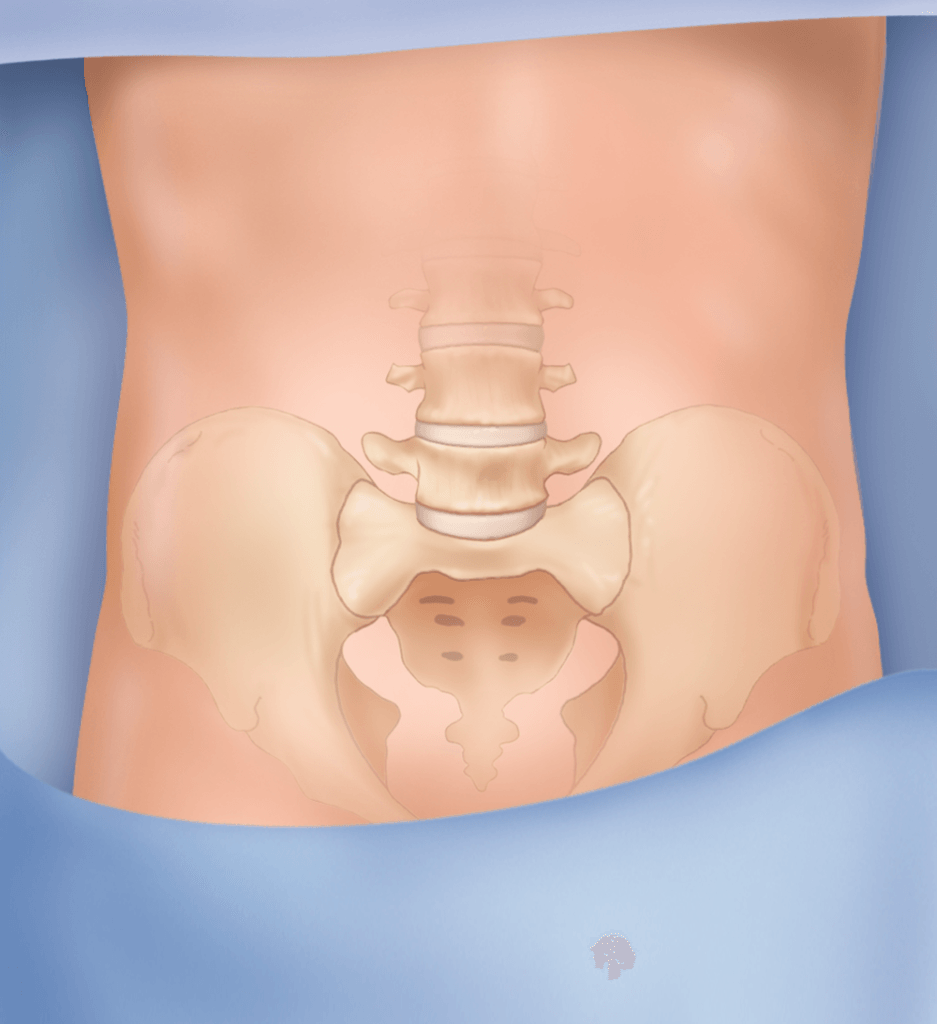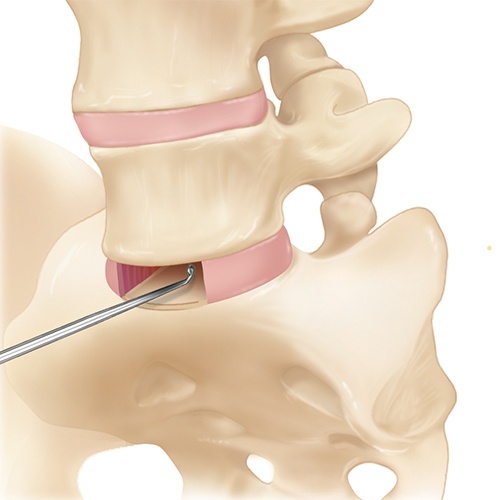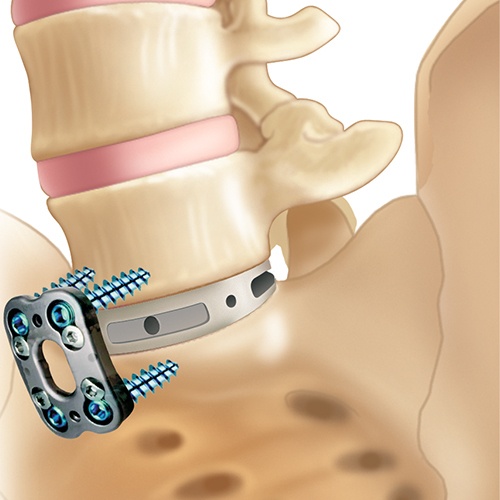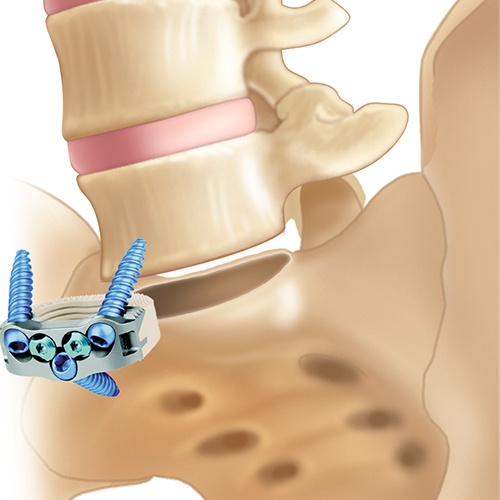Anterior Lumbar Interbody Fusion

What is an anterior lumbar interbody fusion (ALIF) procedure?
The primary goal of an anterior lumbar fusion surgery is to relieve pressure on either the nerve roots or spinal cord and/or treat an unhealthy disc in the lumbar spine through a surgical approach through the front of the body.

Anterior lumbar spine
How is an ALIF procedure performed?
The unhealthy disc is removed and replaced with an interbody spacer to fill the vacant disc space.

Removing the unhealthy disc
In an anterior procedure, a plate and screws, or an integrated plate-spacer and screws, may be used to hold the vertebrae in place while fusion occurs. At times, the anterior procedure may be followed with posterior stabilization. Posterior stabilization is a surgical approach through the back of the body and includes placement of screws and rods to hold the vertebrae in place.

Placing the interbody, plate, and screws

Placing an integrated
plate-spacer and screws
Frequently Asked Questions about ALIF
What Should I Expect from Surgery?
Patients may notice improvement of some or all symptoms and pain from surgery may diminish between two to four weeks after surgery. However, recovery time varies between patients.
It is the surgeon’s goal for the patient to return to normal activities as soon as possible. A positive attitude, reasonable expectations and compliance with post-surgery instructions all help to contribute to a satisfactory outcome.
Disclaimer:
The material on this website is intended to be an educational resource only and is not meant to be a warranty or to replace a conversation between a patient and their physician or member of their health care team. Please consult a physician for a complete list of indications, contraindications, precautions, warnings, clinical results and other important medical information that pertains to this procedure. The decision to receive medical treatment is individualized to the patient and the patient’s symptoms. The information presented on this site may not apply to your condition, treatment or its outcome, as surgical techniques vary and complications can occur. It is important to discuss the viability of any surgical procedure with a physician to decide the right treatment option.
